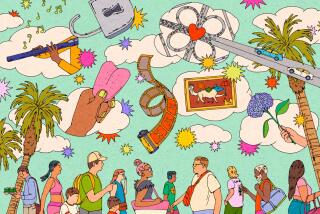The magic of Hollywood can transport you anywhere, but sometimes nothing beats the real thing
When TV show creators use that oft-quoted phrase: “The city is like another character,” they rarely toss it off lightly. Expertly turning practical locations for a series shot in the same city in which it takes place requires a special touch, a feel for the bones of a town and a willingness to engage with the messy real world while simultaneously trying to tell a fictional story. We took a short trip around the U.S. to visit three cities and a “town” to find out just why these locations deserve top billing, right alongside the human stars who populate them.
“Chicago Fire” (Chicago)
Unpack your bags: “You can’t take this show and put it somewhere else,” says creator Derek Haas. “We knew you couldn’t fake Chicago in L.A., so Chicago is woven into everything we do. There’s nothing like downtown, the architecture is different than anywhere else, also the grit and decay which makes for interesting locations. The only drawback is the winter temperatures — it can get really nasty. But the [regular residents] do not kiss Hollywood’s butt — they’re real people, normal people. Respect is earned.”
View on the ground: “We make sure Chicago stands out in every episode,” says locations manager Mono Wilburn. “It feels real. It feels authentic. It may add a ton of imperfections — but it does not feel cookie-cutter. It’s like, ‘I could live in that neighborhood.’ It feels like it could be home.”
“Russian Doll” (Tompkins Square Park, New York City)
FULL COVERAGE: Get the latest on awards season from The Envelope »
Unpack your bags: “One thing that was important to [star] Natasha [Lyonne] was that we explore the themes of the show in their actual settings,” says co-creator (with Amy Poehler and Lyonne) Leslye Headland. “It was important to her that the show is a bit of a ghost story; New York is haunted by past New Yorkers and all the travesties from earlier generations. We knew we really wanted to inhabit Tompkins Square Park rather than force it into the structure of the show. We considered it our snow globe.”
View on the ground: “I didn’t want the show to have the ‘Friends’ thing, like, ‘They wouldn’t have an apartment like that!’” says location manager Joe Sevey. “The [show creators] were on top of all of it, like, ‘I need a [grittier] apartment.’ It added a whole other layer; they didn’t try to gloss over the experience. They wanted a sense of an old New York neighborhood that was still around, and there aren’t that many left.”
“Better Call Saul” (Albuquerque and environs)
Unpack your bags: “It may sound pretentious, but watching this show — there’s almost a cosmic aspect,” says co-creator (with Vince Gilligan) Peter Gould. “The landscape is bigger than life, so the story feels bigger than life. It’s also exotic to a lot of people around the world — and that’s one thing that catches the eye. It doesn’t look like everything else on TV.”
View on the ground: “Albuquerque is a very large town — it doesn’t quite make a city,” says location manager Christian Diaz de Bedoya. “They like to shoot really wide shots and always want to incorporate big blue sky — big wide [shots] instead of just cutting to characters. I average 10-17 locations for each episode — and that has to be squeezed into 7½ days. But I like it, because it’s very organic. You’re seeing real stuff.”
“I Am the Night” (Los Angeles, circa 1965)
Unpack your bags: “We can find the mirror of [lead character] Fauna’s journey in the city itself,” says executive producer Sam Sheridan in an email. “The city reflects her story.” In an interview, he noted, “Location is such a big part of making something real. We had huge location scenes, and it was difficult sometimes — I wanted to shoot a scene in the L.A. River, but we couldn’t because of flooding. The landscape is such a wild part of L.A. In Episode 4, we shot a scene in a café that’s reminiscent of Hopper’s ‘Night Hawks’ painting — and that worked: The loneliness of the city is something we were looking for.”
View on the ground: Finding buildings and places that echoed the 1960s was the real challenge for location manager Jeff Hunter. “It was a much younger town back then, more spread out and wide open,” he says. “Watts had farmland, and you still had orange orchards in the Valley. But it gives such texture when you can shoot on location, so much more character than if we’d built it on a stage.”
More to Read
From the Oscars to the Emmys.
Get the Envelope newsletter for exclusive awards season coverage, behind-the-scenes stories from the Envelope podcast and columnist Glenn Whipp’s must-read analysis.
You may occasionally receive promotional content from the Los Angeles Times.










